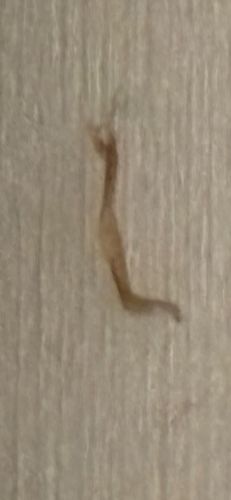Household Casebearer Moth (larva)
Scientific Name: Phereoeca uterella (larva)
Order & Family: Lepidoptera, Tineidae
Size: Larval case typically 10-15 mm (0.4-0.6 inches) in length; the larva inside is smaller.

Natural Habitat
Indoors, especially in undisturbed areas such as closets, attics, under furniture, or dark corners where dust and lint accumulate. They thrive in high humidity.
Diet & Feeding
Larvae feed on a variety of materials of animal origin, including wool, silk, fur, feathers, and often prefer dusty materials. They can also feed on cobwebs, insect remains, and sometimes even plant-based materials like cotton or synthetic fibers if soiled.
Behavior Patterns
Larvae construct a portable, silken case covered with debris like dust, lint, and textile fibers. They carry this case with them and remain inside while feeding and developing. Adult moths are typically nocturnal and poor flyers.
Risks & Benefits
Potential risk as a minor pest, causing damage to textiles, carpets, and stored animal products. Generally not harmful to humans directly. No known significant benefits.
Identified on: 9/3/2025